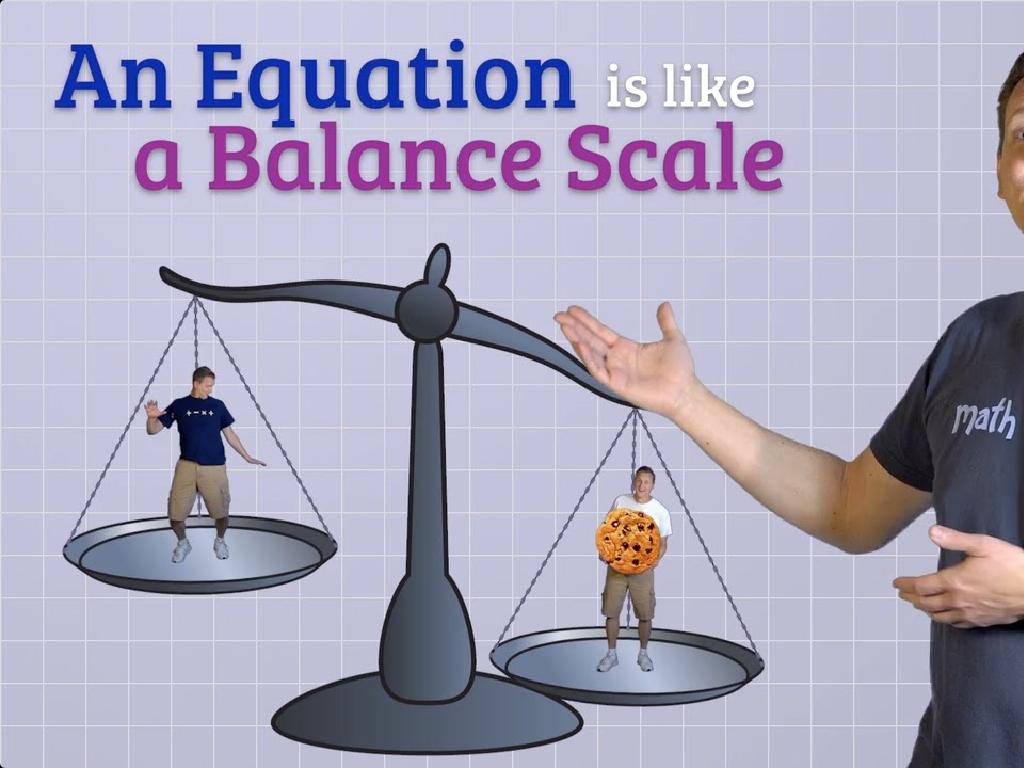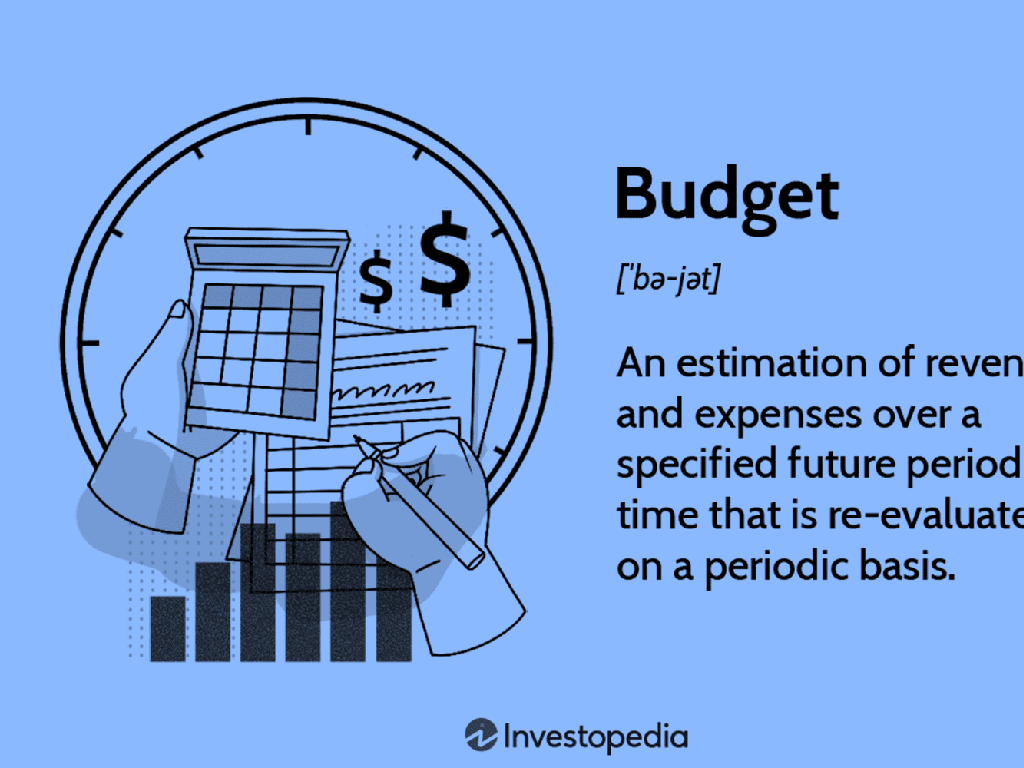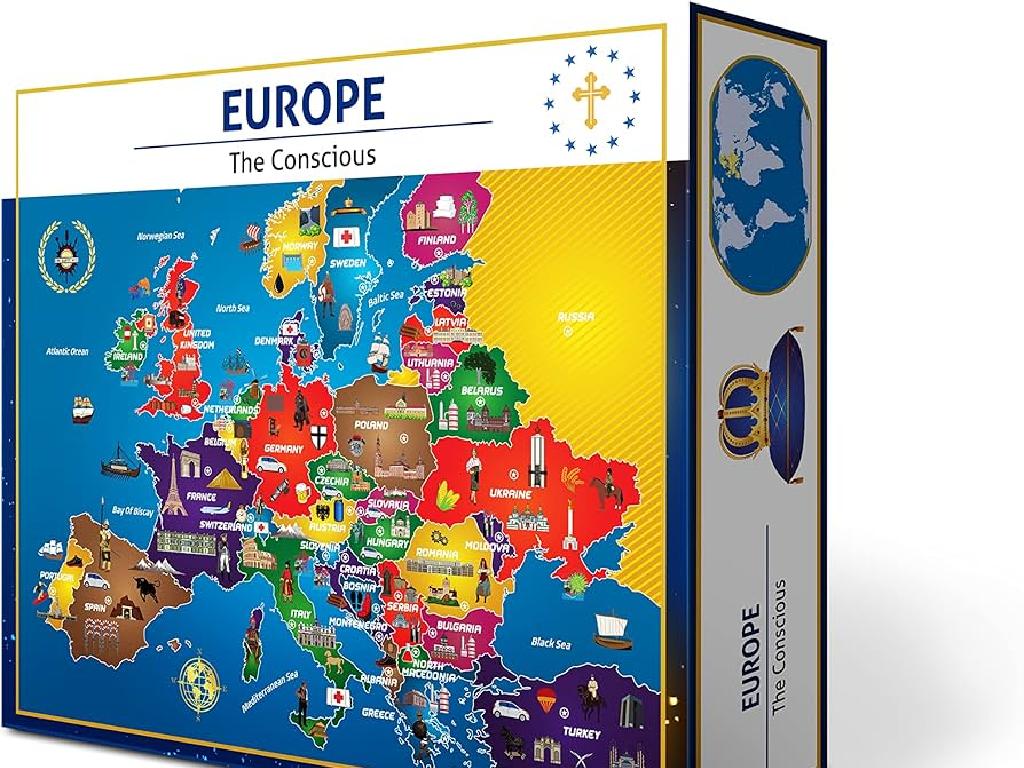Round Mixed Numbers
Subject: Math
Grade: Fifth grade
Topic: Fractions And Mixed Numbers
Please LOG IN to download the presentation. Access is available to registered users only.
View More Content
Today’s Adventure: Rounding Mixed Numbers!
– What are fractions and mixed numbers?
– Fractions represent parts of a whole, and mixed numbers combine whole numbers with fractions.
– Rounding mixed numbers step-by-step
– Find the whole number, look at the fraction, and round up or down.
– Why learn to round numbers?
– Rounding helps estimate and simplify calculations in everyday life.
– Practice problems
|
Begin the lesson by explaining the concept of fractions and mixed numbers, ensuring students understand that mixed numbers consist of a whole number and a fraction. Introduce rounding as a method to simplify numbers, making them easier to work with, especially in mental math or estimation. Teach the steps to round mixed numbers: if the fraction is 1/2 or more, round up; if it’s less than 1/2, round down. Emphasize the practicality of rounding in real-life situations like shopping or cooking. Conclude with practice problems to reinforce the concept, allowing students to apply what they’ve learned.
Understanding Mixed Numbers
– Define mixed numbers
– A number with a whole part and a fraction part, like 2 1/2
– Real-life examples
– Pizza slices left: 3 whole pizzas + 2/8 of a pizza
– Identify whole & fraction parts
– Whole number is 3, fractional part is 2/8
– Practice rounding mixed numbers
|
Begin by defining mixed numbers as the sum of a whole number and a fraction. Use relatable examples such as pieces of pizza to illustrate mixed numbers in a context familiar to fifth graders. Clarify how to distinguish between the whole number and the fractional parts of a mixed number. After explaining the concept, engage students with practice problems where they round mixed numbers to the nearest whole number, reinforcing their understanding of the concept. Encourage students to visualize the mixed numbers with real objects to better grasp the idea of rounding.
Rounding Mixed Numbers
– What is rounding?
Rounding means finding the nearest value with fewer digits
– Round to nearest whole number
To round a mixed number, look at the fraction part
– Use a number line for rounding
A number line helps us see which whole number is closest
– Practice rounding mixed numbers
Let’s round 3 4/5 to the nearest whole number together
|
This slide introduces the concept of rounding mixed numbers. Begin by explaining that rounding is a way to simplify numbers by finding the closest value with fewer digits, which makes them easier to work with. Emphasize that when rounding mixed numbers, the focus should be on the fractional part to determine whether to round up or down. Use a number line to visually demonstrate how to round mixed numbers to the nearest whole number, showing that if the fraction is 1/2 or greater, we round up, otherwise, we round down. Provide several examples for practice, such as rounding 3 4/5 to 4 and 2 1/4 to 2. Encourage students to draw their own number lines and practice with different mixed numbers to solidify their understanding.
Rounding Mixed Numbers
– Steps to round mixed numbers
– Identify the whole number and fraction. Look at the fraction’s numerator.
– Round the fractional part
– If the numerator is halfway or more, round up. If less, keep the whole number.
– Combine with the whole number
– Add the rounded fraction to the whole number to get the rounded mixed number.
|
When teaching students to round mixed numbers, start by explaining the concept of ’rounding’ as estimating to the nearest whole number. Show them how to look at the fractional part of a mixed number and decide whether to round it up or keep it as is, based on the numerator. If the numerator is halfway or more to the next whole number, they round up. Otherwise, they keep the whole number part as it is. After rounding the fraction, they combine it with the whole number part to get the final rounded mixed number. Use examples like 3 4/7 (rounds to 4) and 2 2/5 (stays 2) to illustrate the process. Encourage practice with different mixed numbers for mastery.
Let’s Round Some Mixed Numbers!
– Example 1: Round 3 4/5
– To the nearest whole number: Is 4/5 closer to 0 or to 1?
– Example 2: Round 7 3/10
– To the nearest whole number: Is 3/10 closer to 0 or to 1?
– Steps to round mixed numbers
– Look at the fraction part. If it’s 1/2 or more, round up.
– Practice rounding together
– We’ll do more examples as a class to master rounding.
|
This slide is an interactive class activity where students will learn to round mixed numbers to the nearest whole number. Start with Example 1 by showing 3 4/5 and asking the class if 4/5 is closer to 0 or to 1, guiding them to understand that since 4/5 is more than 1/2, we round up to 4, making it 4. For Example 2, show 7 3/10 and discuss that since 3/10 is less than 1/2, we round down to 7. Emphasize the steps to determine whether to round up or down based on the fractional part of the mixed number. Engage the class with additional examples, asking them to round the numbers as a group to reinforce the concept.
Practice Time: Rounding Mixed Numbers
– Round 5 7/8 to nearest whole
– Is 7/8 closer to 0 or to 1?
– Round 2 2/3 to nearest whole
– Is 2/3 closer to 0 or to 1?
|
This slide is designed as a class activity where students will practice rounding mixed numbers to the nearest whole number. Provide guidance on how to round up or down based on the fractional part of the mixed number. For 5 7/8, since 7/8 is closer to 1 than to 0, we round up to 6. For 2 2/3, since 2/3 is closer to 1 than to 0, we round up to 3. Encourage students to think about the fraction part of the mixed number and whether it’s more than half or less to decide on rounding up or down. Prepare additional examples if time allows and ensure to provide immediate feedback to solidify their understanding.
Class Activity: Rounding Relay!
– Form groups for the relay
– Each group rounds mixed numbers
– Use number lines to visualize rounding
– Share your group’s answers
– Reflect on the rounding process
– Discuss strategies and challenges faced
|
This interactive class activity is designed to engage students in practicing rounding mixed numbers. Divide the class into small groups and provide each group with a set of mixed numbers to round to the nearest whole number. Students can use number lines to help them visualize the rounding process. After completing the task, each group will present their rounded numbers to the class. This will foster a collaborative learning environment and allow students to learn from each other. As a teacher, facilitate the discussion by asking about the strategies used and any challenges encountered. Possible variations of the activity could include rounding to different places, such as the nearest tenth, or using a timer to add a competitive element to the relay.
Rounding Mixed Numbers: Recap & Importance
– Recap on rounding mixed numbers
We’ve learned how to round mixed numbers to the nearest whole number.
– Importance of rounding in daily life
Rounding helps estimate costs, measurements, and time efficiently.
– Open floor for questions
– Share your thoughts!
|
As we conclude today’s lesson, let’s recap the key points about rounding mixed numbers. We’ve learned the steps to round mixed numbers to the nearest whole number, which is a crucial skill in math. Understanding rounding is important because it helps us make quick and efficient estimates in everyday situations like shopping, cooking, and scheduling. Now, let’s open the floor for any questions you might have don’t be shy, every question is valuable! Also, if anyone would like to share something they’ve learned or found interesting, this is the perfect time. Engaging with the material by asking questions and sharing helps reinforce your understanding of the concepts.






